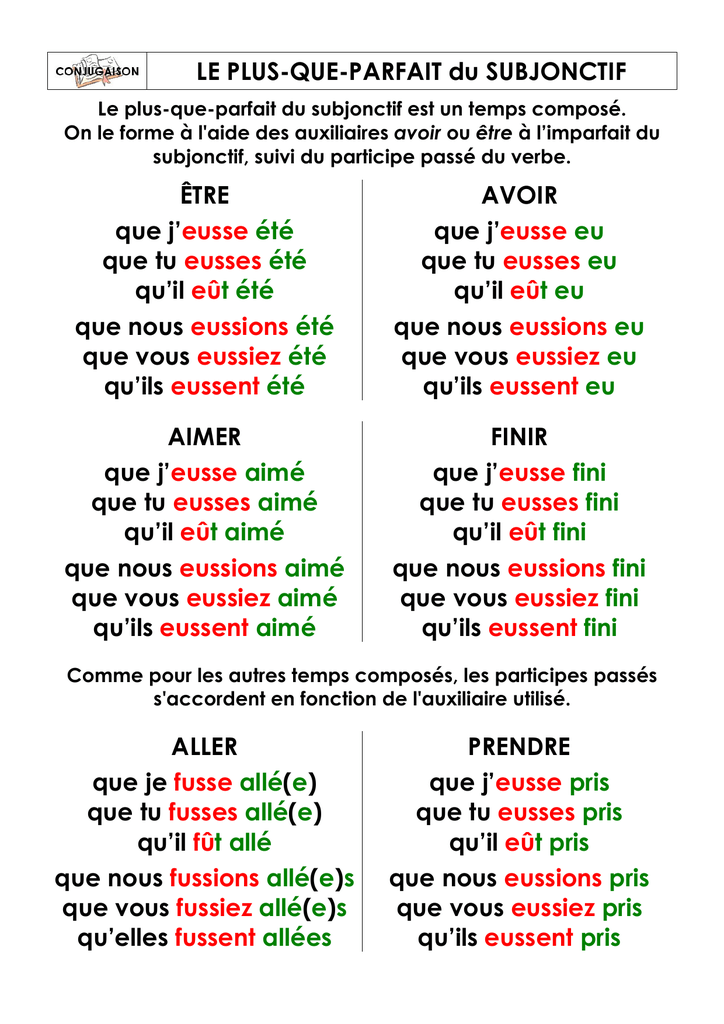
Plus que parfait aller kaserworlds
The plus-que-parfait is the past perfect tense of the indicative mood. It expresses an action that occurred before another action in the past: it could be called ''the past of the past." The English past perfect is formed with '' had '' + past participle, while in French it's avoir or être in the imparfait + past participle. For example
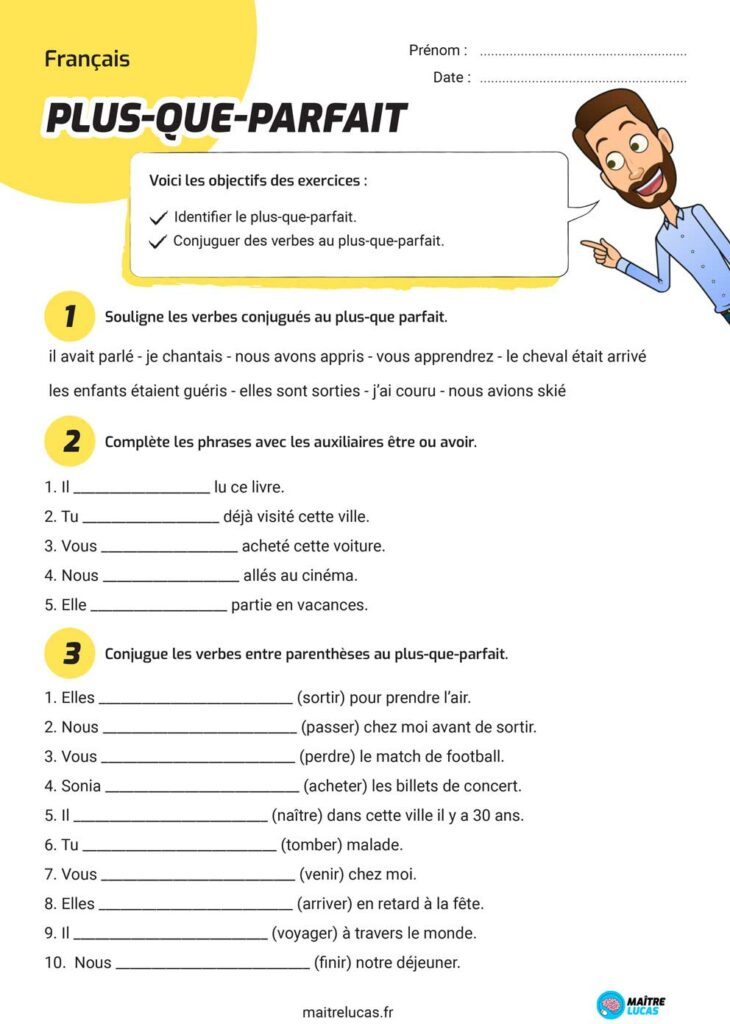
Exercices le plusqueparfait pour CM1 CM2 Maître Lucas
Conjugate the French verb plus que parfait in all tenses: future, participle, present, indicative, subjunctive. Irregular verbs, auxiliary verbs, conjugation rules and conjugation models in French verb conjugation. Translate plus que parfait in context, with examples of use and definition.

Pin en Lingua francese
The 3 Step Method To Forming the Plus-Que-Parfait. In order to form the plus-que-parfait one must: Determine whether to use avoir or être. Conjugate avoir/être in the imparfait. Add the particip passé. The verb parler means "to speak" in English.
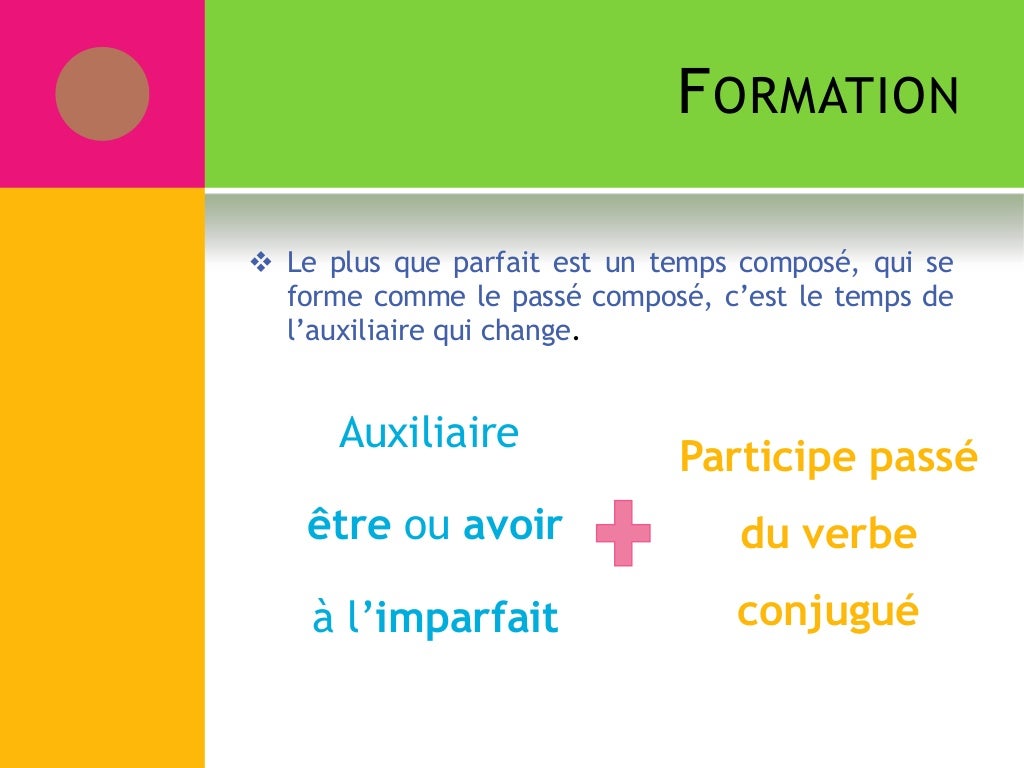
Le plus que parfait
Plus-que-parfait de l'indicatif. Le plus-que-parfait employé avec un autre temps du passé ( passé-composé ou passé simple) permet d'exprimer l'antériorité d'une action par rapport à une action passée. - Elle m'a dit qu'il ne l'avait jamais vu. - Elle me raconta qu'il ne l'avait jamais vu. On conjugue les auxiliaires être ou avoir à l.

PPT LE PLUSQUEPARFAIT PowerPoint Presentation, free download ID
The conjugation of the plus que parfait is a compound tense and, as with the passé composé, it calls for the same 2 auxiliary verbs avoir or être conjugated in the imparfait tense + the past participle of the main verb. This is the reason that most French teachers will start teaching the plus‐que‐parfait only after their students have gained a comfortable level in conjugating the passé.

Le plusqueparfait pour les élèves de CM1 CM2 Maître Lucas
Plus-que-parfait. The past perfect, also called the pluperfect, is a verb tense that distinguishes between two related things that happened in the past, indicating which one occurred before the other. The use of the past perfect is very similar in French and English. The past perfect is used for the verb that happened first, the one that is.
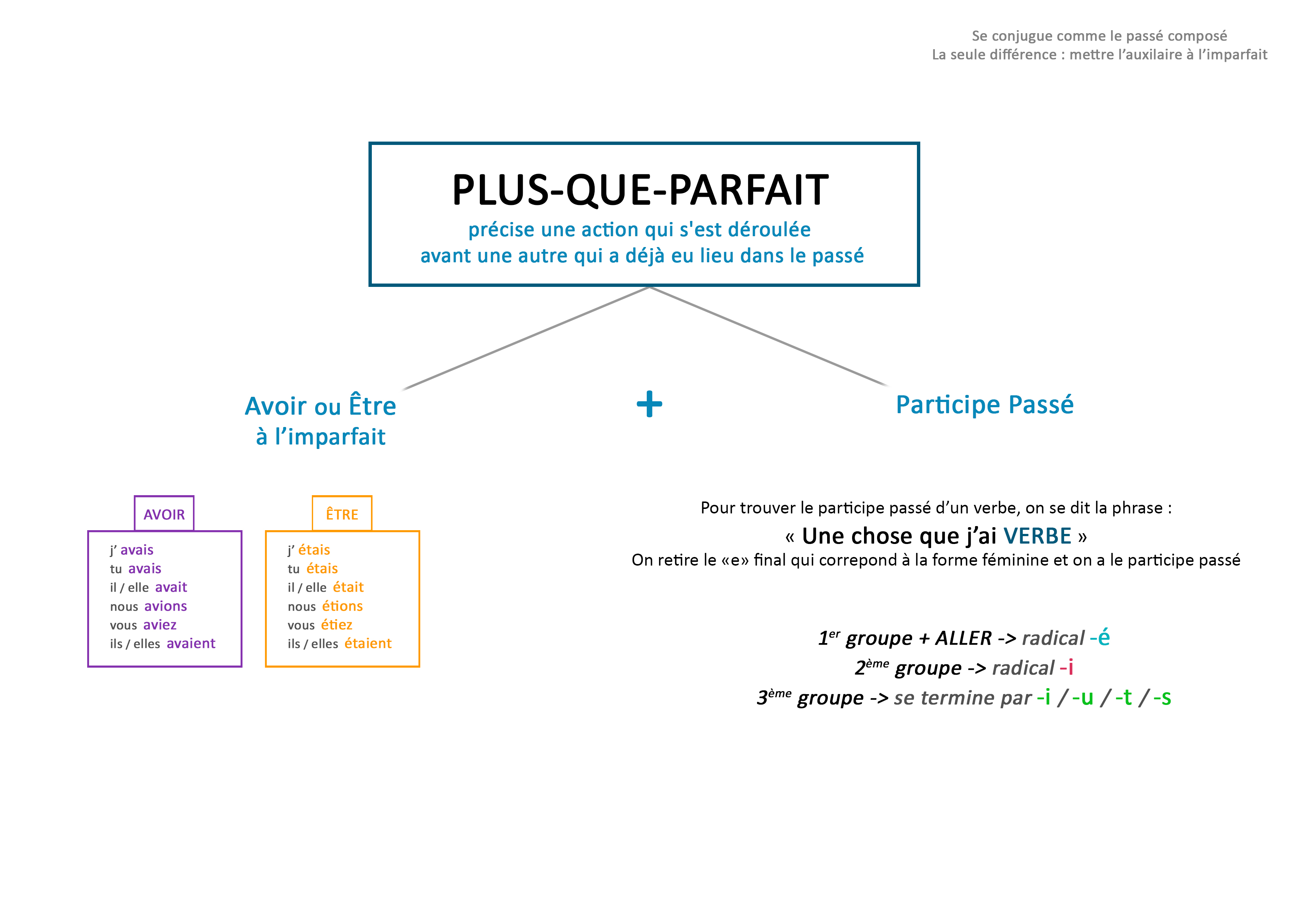
Plusqueparfait Les activités de maman
So, the first part of the sentence is conjugated in "le-plus-que-parfait." The second part (Je n'aurais pas fait) is conjugated in the conditional tense. It should be noted that we can change the structure of this phrase: Je n'aurais pas écrit une excuse si j'avais su. This will not change the meaning. Let's look at 2 more examples:
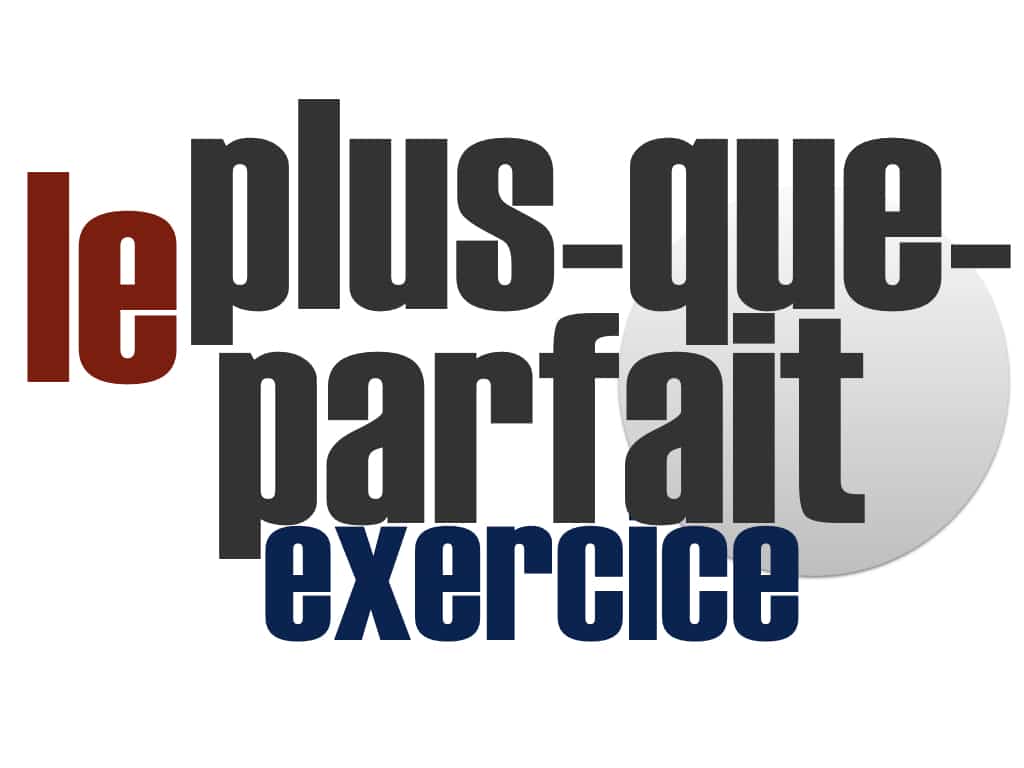
Plus que parfait exercises hohpaey
Grâce à ses services d'accompagnement gratuits et stimulants, Alloprof engage les élèves et leurs parents dans la réussite éducative.
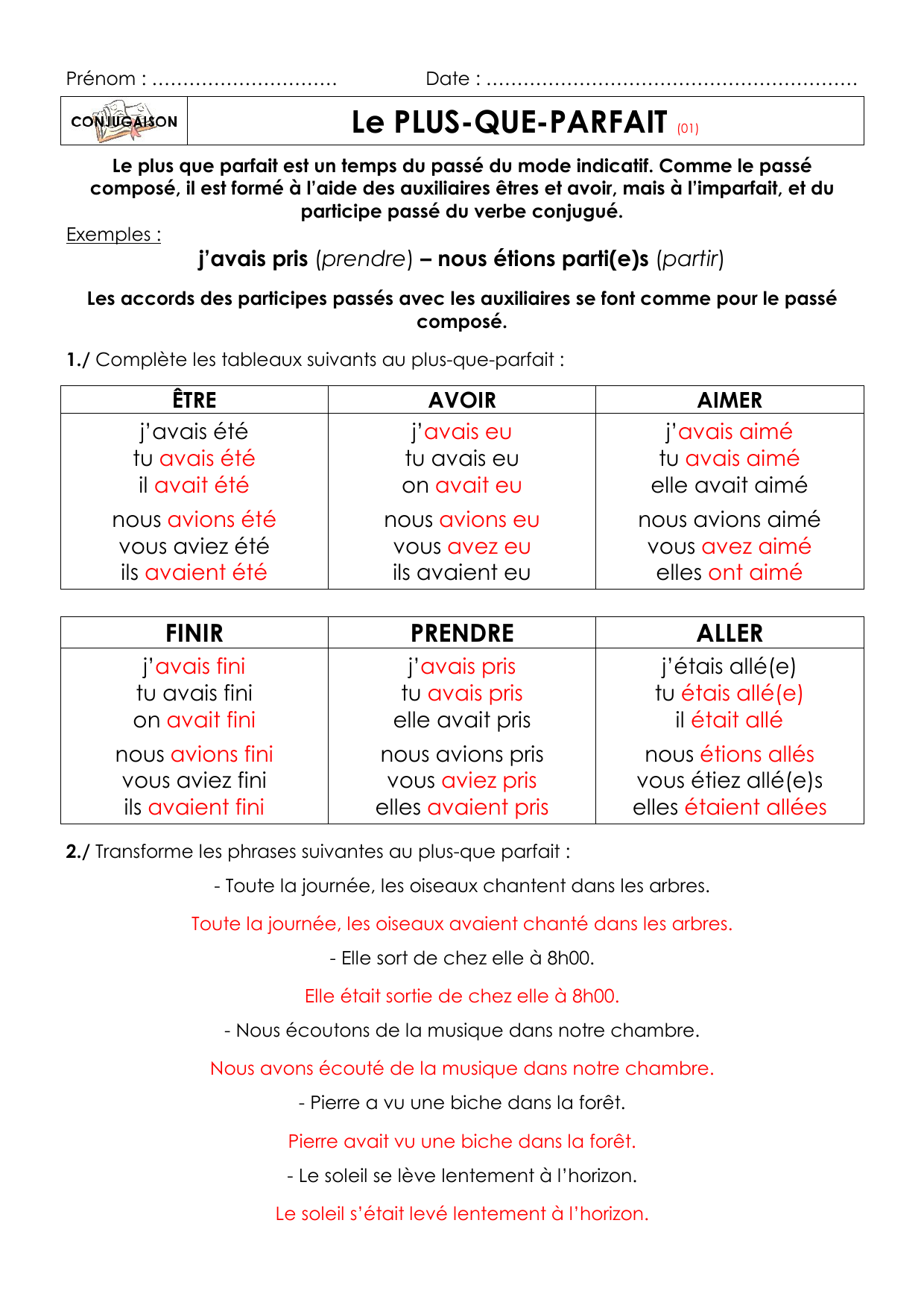
Le PLUSQUEPARFAIT
To conjugate the plus-que-parfait we use the imperfect forms of avoir and être as auxiliary verbs, followed by the participe passé (past participle) of the main verb. In negative sentences, the past participle comes after the second part of the negation (pas). J'avais rigolé. → Je n' avais pas rigolé.

Le plus que parfait
The plus-que-parfait is what's known as a compound tense. It is formed with an auxiliary verb (the imperfect form of être or avoir) plus a past participle of the main verb. Victor n' avait pas dormi. dormir, plus-que-parfait Victor hadn't slept. Muriel et Marcel étaient arrivés en avance. arriver, plus-que-parfait Muriel and Marcel had.

Plus Que Parfait French Grammar YouTube
Complete the sentences using the correct plus-que-parfait form of the verbs in brackets.. Lucas (vendre) son vieux vélo. [Lucas had sold his old bicycle.]|Imparfait form of avoir + past participle of vendre.|Vendre is an irregular verb.|See the list of irregular verbs. Patricia (rester) chez Jean. [Patricia had stayed at Jean's place.]|Imparfait form of être + past participle of rester.

Le plusqueparfait leçon simple et pratique
What is the plus-que-parfait in French? In French, the "plus-que-parfait" or pluperfect tense is used to indicate actions that occurred prior to other past actions. It would equate to "had happened" in English. For example, "Je n'ai pas mangé à 18h00 parcé que j'avais dejà mange à 16h00" (I didn't eat at 6pm because I'd.

The plusqueparfait
1. Le plus-que-parfait de l'indicatif indique une action passée, qui se déroule avant une autre action passée exprimée à l'imparfait, au passé simple ou au passé composé. Le terme « parfait », venant du latin perfectum, indique que l'action est accomplie. Dans les exemples suivants, on peut voir l'utilisation conjointe du plus.
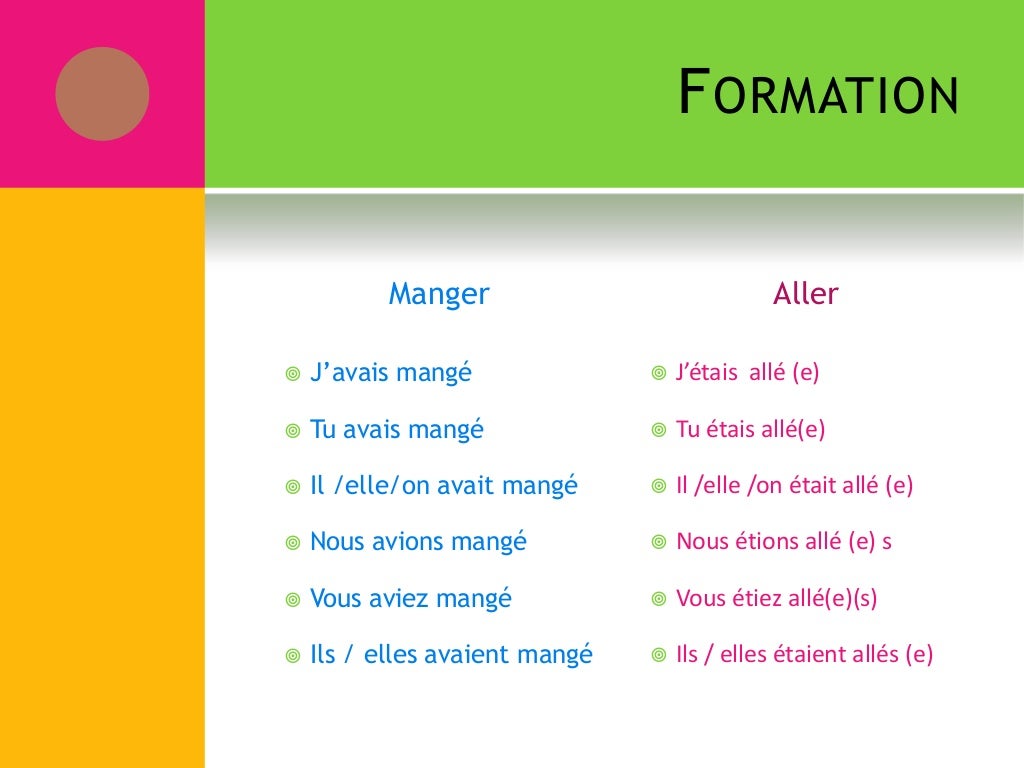
Le plus que parfait
Le plus-que-parfait français est employé pour parler d'actions ou de faits qui ont eu lieu avant un point déterminé du passé. Apprends à employer et à conjuguer le plus-que-parfait en français sur Lingolia grâce à nos explications simples et claires et teste tes nouvelles connaissances avec nos exercices.

PLUS QUE PARFAIT Tense YouTube
The French plus-que-parfait, also known as the pluperfect, is a past tense used to describe an action that was completed before another action in the past. In terms of formation, the plus-que-parfait is constructed using the auxiliary verb "avoir" or "être" in the imparfait (imperfect) form , followed by the past participle of the main verb.

Le plusqueparfait Copy
The plus‐que‐parfait is the compound form of the imparfait (imperfect) and is formed by using the imperfect of the appropriate helping verb, avoir or être (have or be) and the participe passé (past participle) of the verb. Its English equivalent is "had" and the past participle.